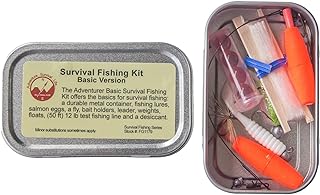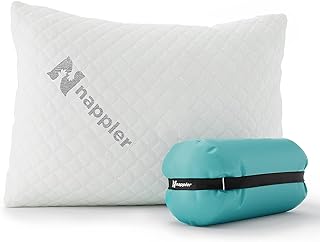5 important factors worth considering when looking for the best hunting knife
Selecting the perfect hunting knife is more than just picking a functional tool. It reflects how prepared, skilled, and respectful a hunter is of the wild. A hunting knife is not just a tool, but a companion in the wilderness, an extension of a hunter’s instinct and expertise. Understanding what makes a superior hunting knife is crucial for a successful hunting experience. Factors like blade material, design, handle ergonomics, and blade length are important in determining a knife’s suitability for different tasks in the field. Choosing the right hunting knife is a critical decision that can make or break a hunt.
See our guide to the best hunting knife.
Blade material
When choosing a hunting knife, one important factor to think about is the material of the blade. The type of material can have a big impact on how well the knife works and how long it lasts while you’re out in the field. For example, stainless steel blades like CPM-S30V or VG-10 are great for keeping a sharp edge and resisting rust, making them perfect for use in tough outdoor conditions. On the other hand, blades made from tool steel such as 1095 or D2 are tough and easy to sharpen but need more care to prevent rust.
It’s also important to match the blade material with your hunting style and preferences. If you prefer skinning or doing precise cuts, a blade like CPM-S35VN that keeps its edge well would be a good choice. For more heavy-duty tasks like chopping, a stronger material like AUS-8 or 5160 carbon steel might be better suited to handle tough outdoor jobs. When picking a blade material for your hunting knife, it’s essential to find a balance between edge retention, toughness, and resistance to rust so your knife can handle any hunting situation.
Blade size and shape
Choosing a hunting knife involves thinking about the size and shape of the blade, which can affect how well the knife works when you’re out in the field. The size of the blade can make a big difference in how versatile and useful the knife is for different hunting tasks. A bigger blade is good for tough jobs like skinning big animals or chopping wood, while a smaller blade is better for detail work and precision tasks. The shape of the blade also matters, as it determines how strong and effective the knife is at cutting things.
For example, a drop-point blade is good for general hunting because it has a strong tip and curved edge, while a clip-point blade is better at piercing and detail work because of its sharp point. Ultimately, the size and shape of the blade you choose comes down to your own preferences and how you plan to use the knife. Think about what kind of hunting you do, what animals you hunt, and what tasks you usually do in the field.
By considering these factors and understanding how blade size and shape affect a knife’s performance, you can choose a hunting knife that will help you have a better hunting experience overall.
Handle material and design
When shopping for a hunting knife, the handle is really important. It affects how comfortable and in control you are while using the knife on your hunting trips. It’s best to choose a handle material that is both strong and provides a good grip. Traditional materials like wood have a nice, classic look, but modern materials like G-10 or Micarta offer better grip and durability. Overall, the handle should feel like a natural part of your hand so that you can use the knife easily in any hunting situation.
Besides the material, the design of the handle is also crucial for how well your hunting knife works. Whether you choose a straight, curved, or ergonomic handle, it should be comfortable and easy to use. A well-designed handle not only keeps your hand from getting tired during long uses but also helps you be more precise and agile when skinning game or doing detailed cutting tasks. By picking a handle that fits your hand size and grip style, you make your hunting experience more intuitive and efficient. This shows why handle material and design are so important when choosing a hunting knife.
Tang construction
When choosing a hunting knife, it’s important to consider the construction of the Tang. The Tang is the part of the blade that goes into the handle and affects the knife’s durability and balance. A full Tang construction means the blade goes all the way through the handle, making it strong and reliable for outdoor use. This type of knife is a good investment for hunting because it will last a long time and be dependable when you need it most.
On the other hand, knives with partial or narrow Tang constructions may not be as strong or stable, which can lead to breakage or imbalance during use. When buying a hunting knife, it’s essential to prioritize one with a full Tang design for better structure, handling, and control, especially in critical hunting situations. The Tang is like the backbone of your knife, influencing how well it performs and how long it lasts – a choice that can impact your hunting experiences.
Sheath quality and carry options
When choosing a hunting knife, it’s important to think about the quality of the sheath and how you’ll carry it. A good sheath protects the blade and makes it easy and safe to take your knife with you when you’re hunting. Choosing a durable material like leather or Kydex can make a big difference in how comfortable and secure it is to carry your knife. You should also think about how you want to carry your knife, whether it’s using belt loops, clips, or leg straps.
It’s crucial to have a strong sheath and different ways to carry your hunting knife to improve your performance and be ready for any situation. Make sure the sheath you choose works well with your knife, so they both fit together perfectly. A well-designed sheath makes it easy to grab your knife quickly, so you can react fast when opportunities come up while you’re hunting. A reliable sheath can make a big difference in how successful your hunting trips are, so don’t overlook its importance. By thinking about sheath quality and carry options when you pick out your hunting knife, you’re not just getting a tool but a companion to help you through all the challenges you’ll face outdoors.
Conclusion
To summarize, the hunting knife is more than just a tool – it holds a deep connection to tradition and nature. It symbolizes self-reliance, respect for wildlife, and a love for hunting. Its importance goes beyond just being useful in the wilderness; it represents a rich history and passion for those who use it. In today’s world, the hunting knife connects us to our primal instincts and the natural world that still influences us. Want more info on dishwashing gloves for long nails, check the best dishwashing gloves for long nails.


